Ever wonder exactly where your beef comes from? Or what really goes on in cattle ranching? Or what cows eat? This post will answer all those questions and more!
This post is a collaboration with Beef. It’s What’s for Dinner. on behalf of the Beef Checkoff. I received compensation, but all opinions are my own.
I know that all of you care where your food comes from. I know that you want to make sure you are buying the best for your family and also food that was raised responsibly. Because of that, I’m very excited to tell you all about the Beef Quality Assurance program brought to you by the Beef Checkoff.
The Beef Quality Assurance (BQA) program trains farmers and ranchers on best practice cattle management techniques to ensure their animals and the environment are cared for within a standard set of guidelines across the U.S. beef industry. They are no strangers to raising the bar when it comes to cattle care.
These same farmers and ranchers know that you are more interested than ever about where your food comes from, so they wanted you to be aware of the BQA program. There are many facets of the program, all of which are directly related to doing what’s best for the cattle and the environment.
Main Areas of Cattle Care
- Cattle handling
- Herd health
- Record keeping
- Cattle nutrition
- Cattle transportation
- Environmental stewardship
Raising the Bar On Cattle Care Video
Cattle Handling
While cattle handling may seem like a minor part of raising beef, it actually plays a huge role in beef quality. BQA ranchers at every phase of the beef lifecycle follow detailed animal handling guidelines to ensure a safe and low-stress environment.
Did you know that the way cattle are run through a chute to get necessary healthcare matters? It does! The pens, chutes, and alleys that are used to work cattle can all be designed to help them feel safe and comfortable as they move through to get their necessary healthcare (vaccinations, deworming, etc.). In fact, the BQA guidelines have very specific details on what is acceptable and what is not.
One of the most interesting things you’ll learn when you go see cattle being properly handled is how quiet it is. The handlers are quiet and when the cattle feel safe and aren’t stressed, they are quiet too.
Herd Health and Record Keeping
Herd health is a big deal for a few reasons. The first reason is that ranchers care about their cattle and making sure they are healthy and comfortable! Ranchers income is also dependent on the product they provide and stressed, or unhealthy animals do not perform well.
The first bullet point on the BQA guidelines is to prevent problems. Prevention is key, and all great ranchers know that. There is a reason it is first in line when it comes to animal healthcare!
The BQA guidelines also outline how ranchers should work with a veterinarian to determine medical care, how herd health checks should be performed, and how cattle should be housed.
Antibiotic use is also covered heavily. It is very important to ranchers, veterinarians, and consumers that all antibiotic use – in humans or animals – is taken seriously and done judiciously. It’s no surprise there are guidelines associated with it!
Farmers and ranchers keep diligent records on the care and treatment given to each animal to ensure the animal’s and public’s health and safety is the top priority. These records help farmers and ranchers to be sure that there are no unsafe levels of antibiotics or animal health products in the beef that is available to consumers.
Cattle Nutrition
Now we get to talk about my favorite topic – cattle nutrition! I have a master’s degree in Ruminant Nutrition, so talking about anything with 4 stomach chambers gets me excited, ha!
Did you know that cattle have a professional nutritionist consult with their ranchers to make sure they are getting the exact nutrients they need? It’s true.
Most cattle are on pasture for the majority of their life, even if they are finished for a short period of time on grain in a feedlot. Throughout their life, they are given appropriate protein, energy, vitamins, and minerals and during their finishing period, they are also fed a specific diet.
In BQA, there are specific rules producers need to follow for what cattle should eat at each phase of their life. The cattle should maintain a certain body condition score depending on their age.
There are multiple ways to raise beef and each individual has a personal preference based on taste and production cycle. There is little difference nutritionally between grain-finished and grass-finished beef. Check out this Beef Choices infographic to see a comparison between the two.
While grain-finished cattle do eat a high grain diet, it is scientifically balanced to meet their nutritional requirements! How do I know this? I’ve done it!!
Remember that different feedstuffs are simply vehicles for nutrients. Cattle are unique and awesome because they have “four stomachs” or, more accurately, a four-chambered stomach.
This not only allows them to convert unusable feed into meat and milk, it allows them to eat a very wide variety of feed because they don’t actually do a lot of the digestion – bacteria in their rumen (stomach) do! And manipulating the type of bacteria in the rumen and what they like to eat is something that is easily done.
So, as long as someone with an education and understanding of cattle nutrition is involved with the feeding process, cattle are eating balanced nutritious diets. And ranchers who follow BQA guidelines rely on cattle nutritionists every step of the way.
Cattle Transportation
Another area of BQA that might seem slightly odd at first glance is cattle transportation. As it turns out, transportation is a really big part of cattle welfare! Properly transporting cattle can reduce disease in the herd, prevent bruising, which increases meat quality, and is important for biosecurity purposes.
Both ranchers and professional drivers are trained on the appropriate methods for transporting cattle. There are guidelines for safe handling, space allocation, and keeping an overall low-stress environment to ensure that cattle travel from point A to B in a safe manner.
Environmental Stewardship
In every part of the BQA guidelines, environmental stewardship is mentioned. It is important to ranchers to maintain their land as best they can. It is their heritage as well as their future.
Just like each part of the beef lifecycle is different, each ranch is different, and sustainability looks different for each one.
One of the ways beef remains so sustainable is because cattle are able to utilize feed sources and land that is unsuitable for crop production. They can turn that land and feed into a nutritious food source for us and also many other products we use regularly like leather, medicine, and biodiesel – just to name a few!
Managing cattle production and the grasslands they graze on is also a big part of conservation. Ranchers want to improve the land so they can use it for generations to come! This means their management is beneficial for not just the cattle, but the wild plants and animals as well.
Beef farmers and ranchers are constantly looking to become more sustainable and lower their carbon footprint. They do this through improved feeding methods and science, improved cattle genetics, and improved health and welfare. All of these topics should sound familiar – each are a big part of the BQA program!
But, as usual, don’t just take my word for it! Go check out some farmers and ranchers involved in different areas of the beef industry and see first-hand for yourself just how much they care about their cattle and their land.
Areas of the Cattle Industry
Cow/Calf Operation
Cow/calf operations are where cows are bred by bulls and calves are born in either the spring or fall. This happens each year and these cattle spend the majority of their time grazing on pastures or rangeland.
Some of the calves will remain on the farm as replacement heifers (females) and some calves will move on to backgrounding or stocking facilities (males and females).
“When we think about sustainability, it means that the decisions we make every day should be in the best interest of the ranch, the cattle, the land, the wildlife and the water on our ranch.” Kim Brackett
Stocker
After weaning, cattle continue to grow and thrive by grazing on grass and pastures with ranchers providing supplemental feed including vitamins and minerals to meet all of their nutritional needs. This operation is typically known as Stocker/Backgrounder. Calves between 6-12 months of age come here to gain weight before going to the feedyard for finishing.
Feedyard
The last 4-6 months of beef cattle’s life is often spent on a feedyard. They are health checked daily and fed a specially balanced diet to help them gain weight so that the beef is the best quality it can be when it goes to the consumer.
“Steve’s grandparents started this farm. We want to honor them in how we are continuing it. When we leave here, we hope the next caretakers will think the same way and want to make it better than they found it. We’re not perfect. I don’t think anyone is. The beauty, though, is in the trying.” Joan Ruskamp
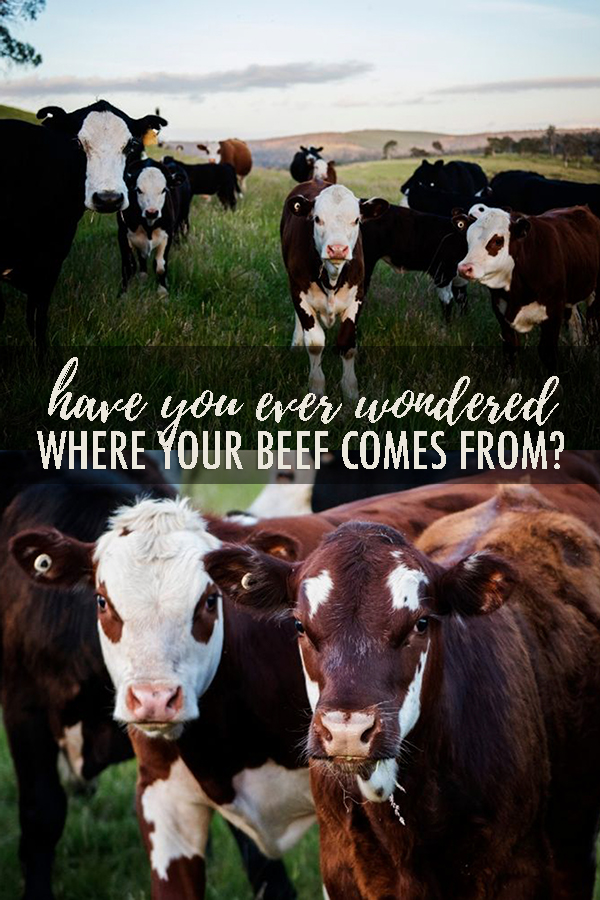
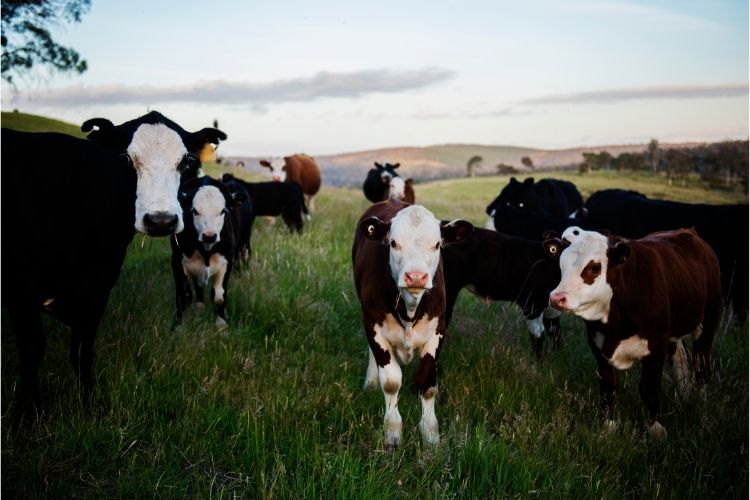


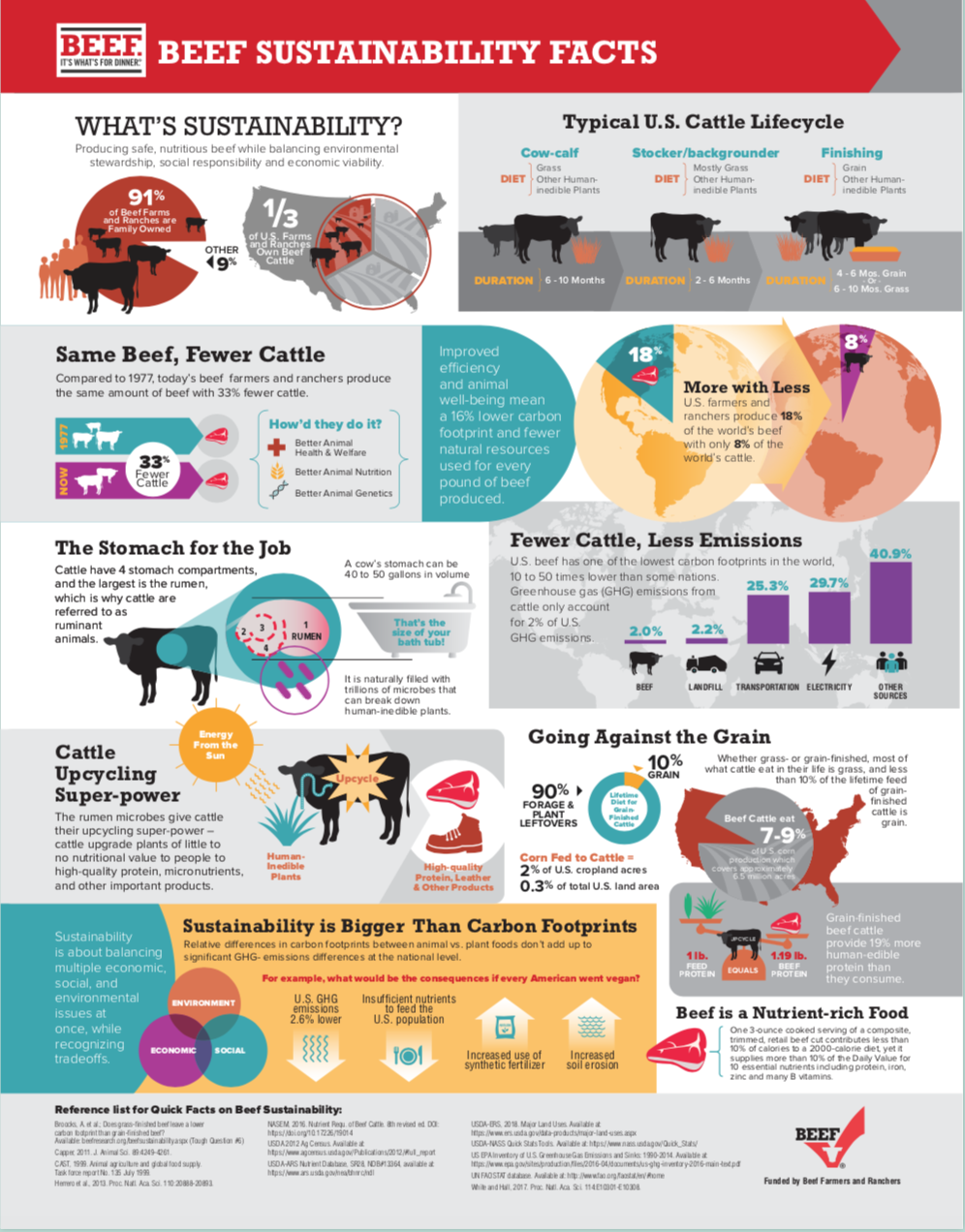
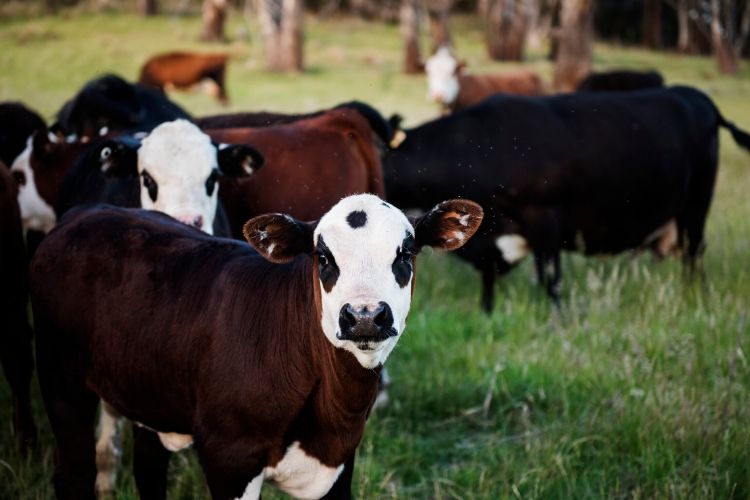

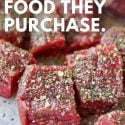
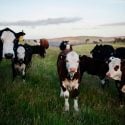
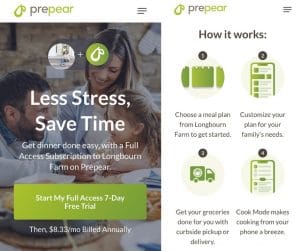

Adrienne McGuire says
Thanks for this interesting article on where beef comes from. We appreciate having reliable and up-to-date information. Keep up the good work!
Alli says
Glad you enjoyed it!!
Anthony Young says
But this information is very helpful, but imported beef is sold as “product of USA “ so the consumer still doesn’t know where their beef comes from??
Alli says
Hi Anthony! Great question, sorry for the delay in response, I wanted to make sure I did some research before answering. Country of origin labeling is not required right now by the USDA. It used to be, but there were major problems with it (labeling like you pointed out OR the opposite issue, labeling that didn’t make any sense like three countries being listed on a steak package…um how is that possible?) and so it has been voted off the table as of right now. Many producers will voluntarily label their products, which also usually have a farm or ranch name that you can look up. If beef is imported, regardless of how it is labeled, it is inspected twice and the standard for how it was processed needs to either meet the USDA standard or exceed it. The producers I talked too are very interested in Country of Origin labeling but really want to see it changed from how it was in the past to be more accurate and provide a trackable trail from the store back to the ranch it came from. That would be the most helpful for consumers as well. Hopefully, this is something that we can continue to work with the government on and get figured out! I’m sorry this isn’t a super great answer to your question, but I hope that provides some clarity. Let me know if you have more questions!